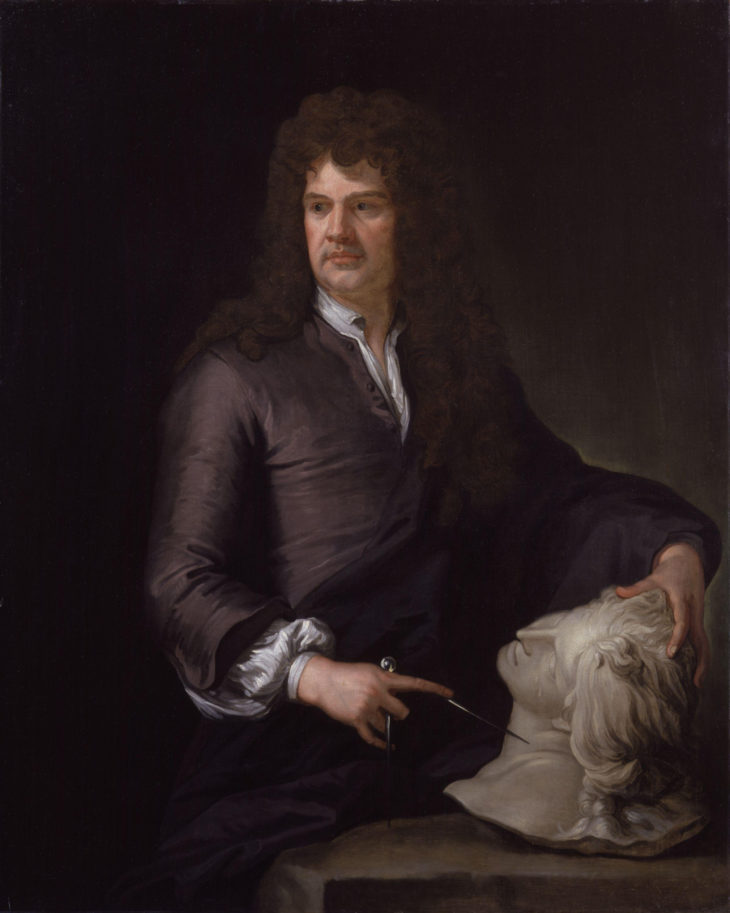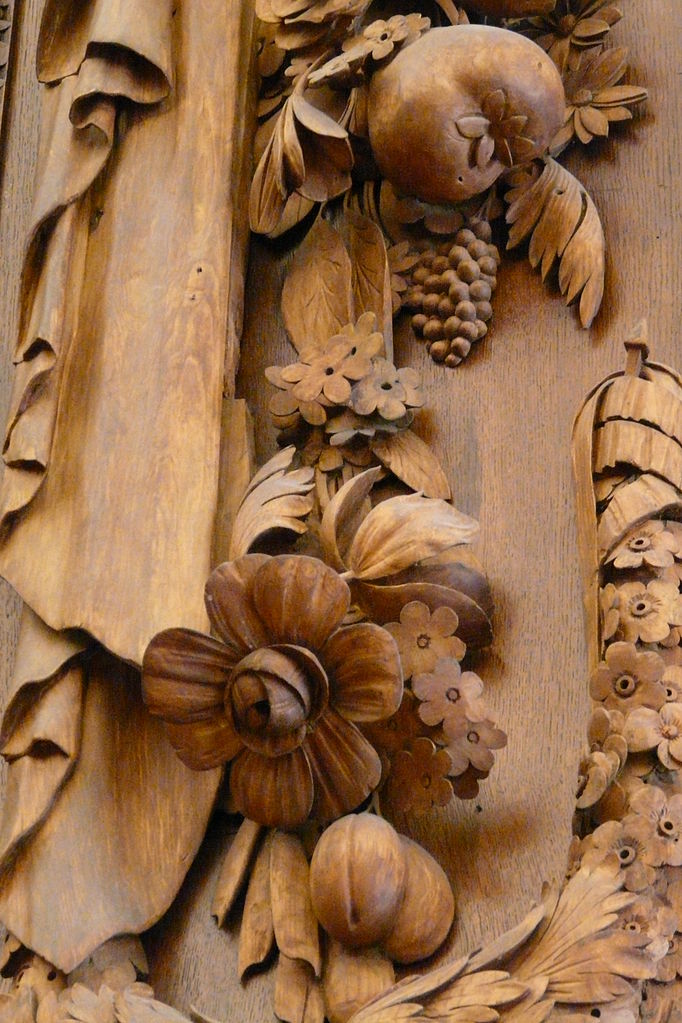Furniture in Focus: Grinlin Gibbons – Carving for Kings

Walk into the forest and pick up a stick. It probably looks a bit like something already, right? Maybe if you cut this bit off or smoothed that bit out… it’s a process as old as mankind itself. When the infinite malleability of wood meets the limitless expanse of human imagination, all you need is a chisel and you’re ready to carve.
Making art is one of the first things that humans ever did. The first apes to ever straighten their spines found their newly lofty heads filled with something novel – thoughts. Suddenly there were feelings, beliefs, desires… the newly discovered reaches of our minds required a language sufficient to explore them. It was thus, almost in the same moment that our species came to be, that art was born.
But before paper, before instruments, perhaps before even language, how did early man express himself? Looking around he would have found two things in natural abundance: bits of wood and bits of rock. Bash the wood against the rock and nothing much will happen, but bash the rock and against the wood and you’ve invented the chisel. So it was at the dawn of our history. Our first thoughts were carved into wood.

The King’s Carver
In the late 17th century a man came along who redefined the art of carving wood. It was said that a pot of carved of flowers and leaves that he set above his gate would tremble when carriages rolled past, so fine was the work. That man was Grinling Gibbons, the Gaugin of the gouge, Van Gogh of the veiner and the Michelangelo of the mallet… he was one of the greatest artists of his age, but you’ve probably still never heard of him.
Born in Holland to English parents, Gibbons only came to British shores in 1667 at 19. We don’t know much about his early life, but we do know it didn’t take long for Gibbons to establish a firm reputation as a master carver. When his landlord, the famous diarist Evelyn, came to visit Gibbons in a cottage that he rented from him he chanced to see Gibbons working on a carved relief. The scene was a copy of a crucifixion by Tintoretto, done by candle light in his cramped Deptford studio. So impressed was Evelyn that he spoke of its quality in glowing terms to his friend Sir Christopher Wren. Between them a meeting was soon organised with the king, Charles the second and this was the beginning of a relationship that was the lynchpin of Gibbon’s commercial success.
Rebuilding London
It was one of the most calamitous events in English history that gave the young Gibbons his greatest opportunity. In 1666 a great conflagration tore through London, destroying entire neighbourhoods of the densely packed city. London still followed an ancient medieval street pattern, with overhanging timber-framed buildings and ancient Gothic churches which ignited like a tinderbox. The great conflagration had destroyed the city and it’s institutions desperately needed to be rebuilt. The terrible plague that had ravaged Britain only the previous year meant that many of the houses, now reduced to ashes, had no sitting tenants to re-home. The empty spaces were eyed greedily; what had recently been wooden tenements could be replaced with marble churches…
England’s newfound protestant fervour, forged in the fires of a brutal civil war, meant a general dislike for painted altarpieces. This reactionary stance gave carvers and masons opportunities for large scale commissions that had not existed before as plainer wood and stone were in vogue. The church had some of the deepest pockets in England and seemed determined to empty them…
Cometh the hour, cometh the man. Sir Christopher Wren found himself at the centre of plans to rebuild the city. London was to be as shining example of the modernity and power of Britain. A new city would rise from the ashes, a city to rival the decadence of Paris. London would be rebuilt in the mould of Rome. Gibbons was to be his collaborator, decorating the buildings as Wren erected them.
The end of an era
By 1680, Gibbons was already widely known as the King’s Carver. Charles II’s patronage and Wren’s Friendship had proven lucrative for Gibbons, giving access to prestige commissions and well-heeled clientele. When the king died in 1685, Gibbons quickly established a relationship with his successor James II. Unfortunately for Gibbons, James’ short-lived reign ended in disaster, with the erstwhile king ousted by the glorious revolution. Despite working for all his predecessors, Gibbons never again attained favour in the way that he did with Charles.
Happily, work was still constantly available. Throughout the late 17th and early 18th centuries great swathes of new country houses were built. Their rich owners wished to fill them with the most ostentatious items possible (presumably just to show just how fabulously wealthy they were) and Gibbon’s Incredible talent secured demand. As a consequence, the vast majority of Gibbons’ work can be seen in country estates up and down Britain.
Whilst Gibbons worked in a number of different timbers (and even in stone for much of his later work) it is his carvings in lime for which he is best known. Lime is one of the best timbers available for carving, with a fine, easily worked grain. It was the qualities of lime wood as much as his undeniable talent, that enabled Gibbons to create such amazing artworks.
To try your hand at carving for yourself, why not pick up so lime blanks from us today? We can’t promise you’ll be the next Grinling Gibbons, but we can guarantee that you’ll have the best jumping off point available!
Blog | 5 years AGO